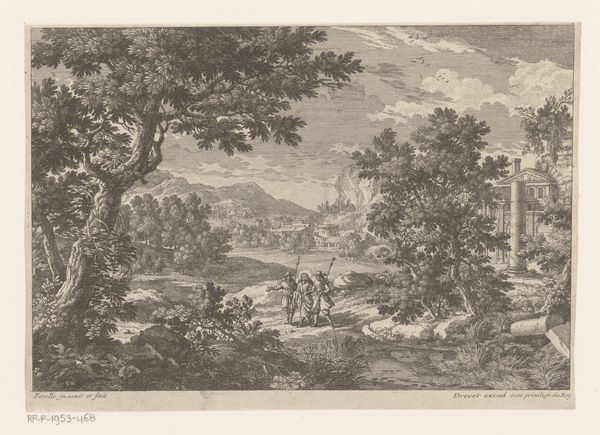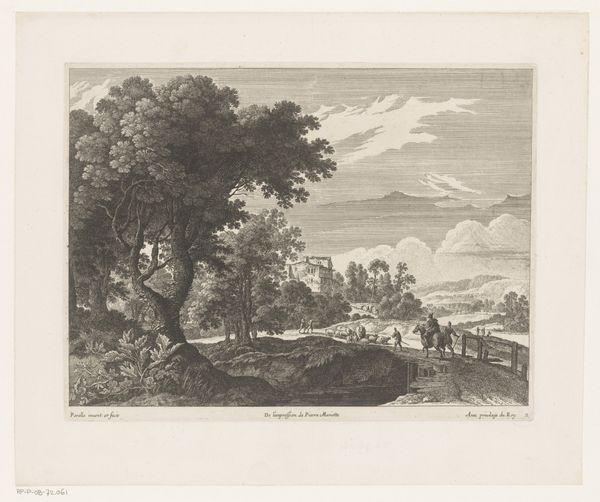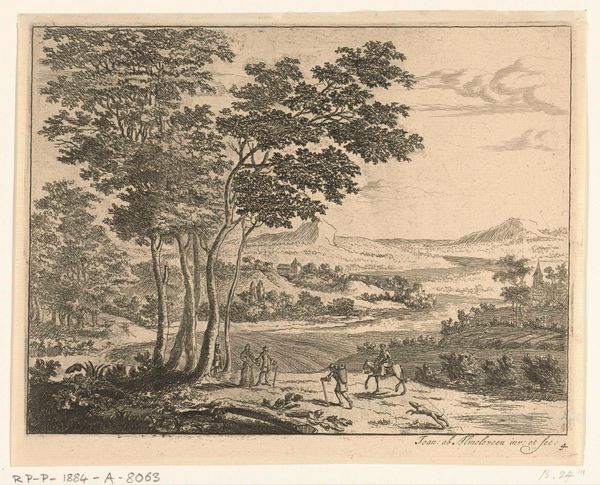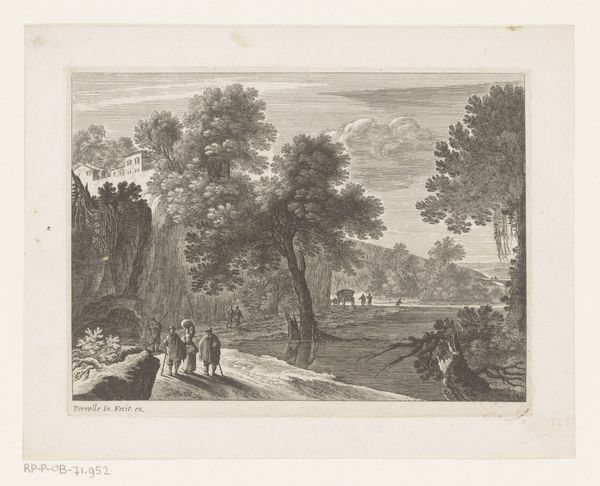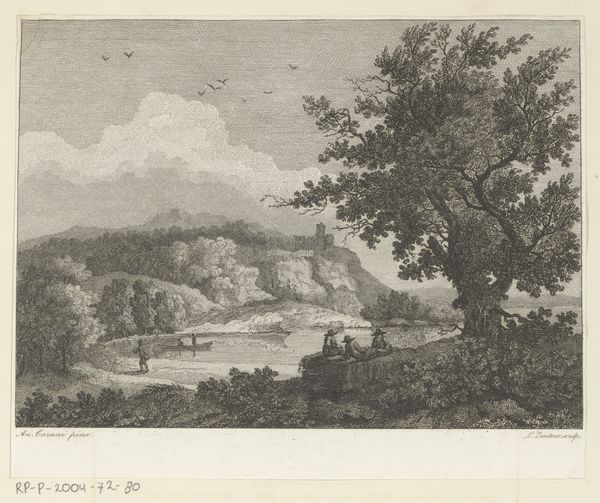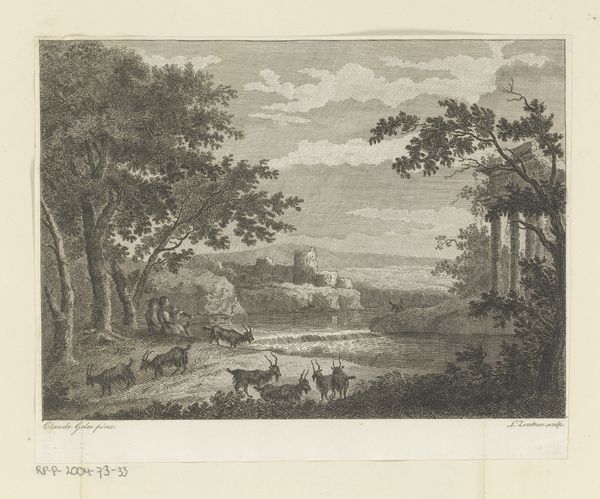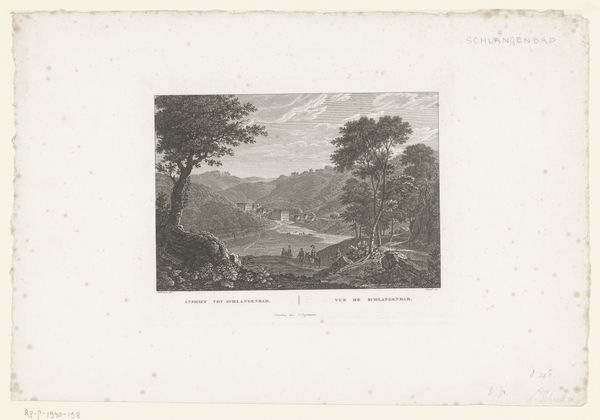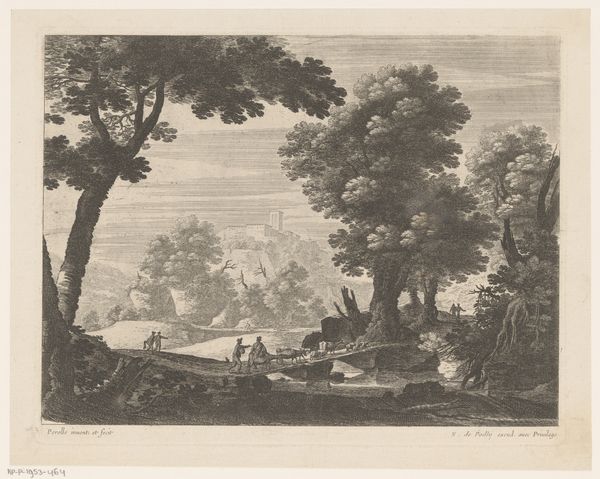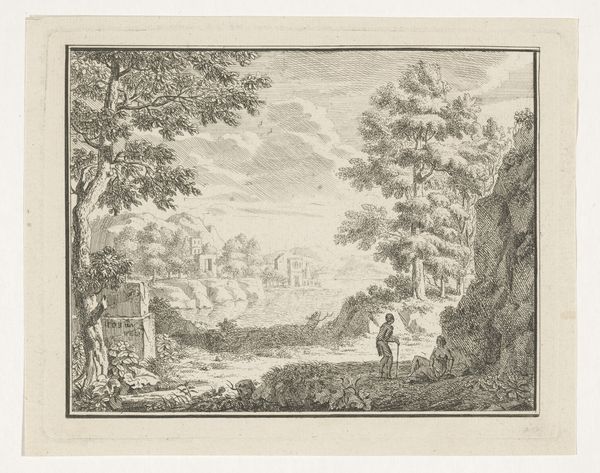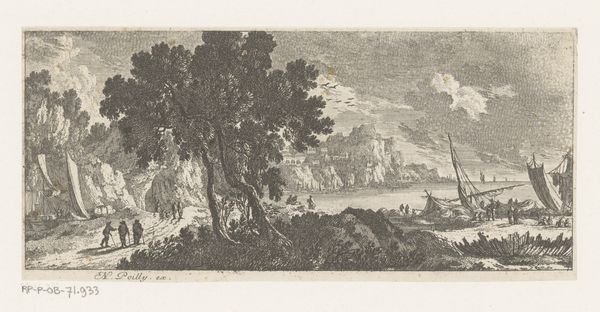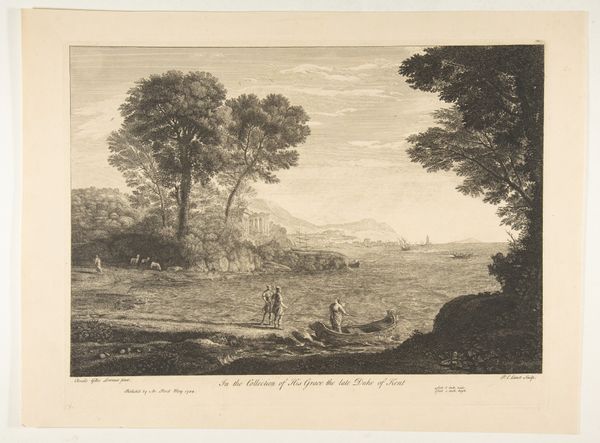
etching, engraving
#
etching
#
landscape
#
romanticism
#
engraving
Dimensions: height 171 mm, width 209 mm
Copyright: Rijks Museum: Open Domain
Editor: So, this is J.L.L.C. Zentner's "River Landscape with Moored Boat," created sometime between 1791 and 1798 using etching and engraving. It feels like a tranquil scene, very much of its time, but the material… the etching and engraving itself, what can that tell us? Curator: The choice of etching and engraving is crucial. Think about the labor involved, the precise, repetitive actions. These weren’t spontaneous sketches; they were meticulously planned productions. Consider also that engravings and etchings were easily reproducible, making the artwork accessible to a broader audience. Does this suggest a shift in the art market? Editor: It makes sense. More affordable art for a rising middle class, perhaps? But isn’t landscape a more traditional subject, even for a reproducible artwork? Curator: Landscape is traditional, yes, but how it's being used matters. The emphasis here seems less on glorifying a specific estate or patron and more on a generic, romanticized version of nature. Think about the social upheavals of the late 18th century—the French Revolution. Were these images providing an escape, a safe haven from the turbulent realities of the time, by appealing to idealized views of nature? What’s nature without an intervention, in this scene? Editor: The presence of people and boats tells of resource distribution. It is an ecosystem providing the necessities for the life of people and goods? Also, looking closely at the print, there's a texture to it—a result of the artist’s hand directly manipulating the materials to create this image. It reminds me that art is labor, a product of both skill and the means available at the time. Curator: Exactly. And that connects us to the economic conditions, to the social structures, which funded and consumed these prints. The means of production are integral to understanding its meaning. Editor: So, understanding the "how" helps understand the "why." Seeing how the materials and techniques enabled wider access really shifts my perspective. Curator: Indeed, by focusing on the material realities, we unearth a richer understanding of the artwork's role in society.
Comments
No comments
Be the first to comment and join the conversation on the ultimate creative platform.
